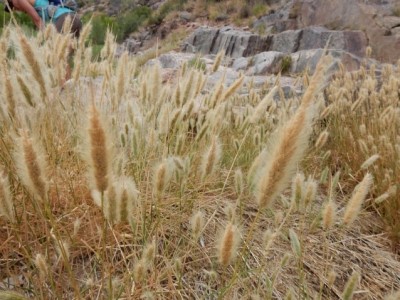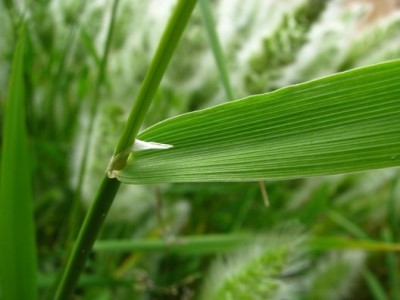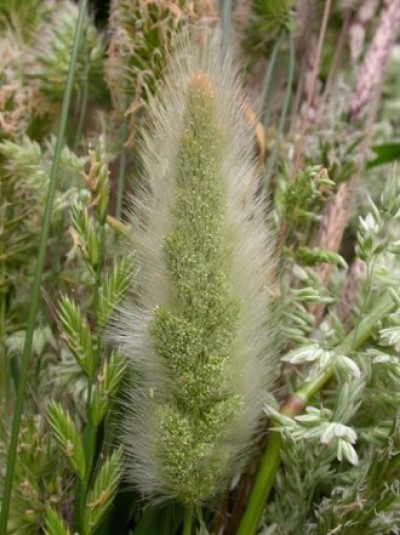Rabbitsfoot Grass
by Audrey Harvey, Research Assistant at Montana State University
Introduction

Photo by Matt Lavin (Flickr).
Rabbitsfoot grass (Polypogon monspeliensis, also called annual beardgrass) is an introduced annual grass widespread throughout the world. The grass originates from Mediterranean climates of southern and western Europe. It is naturalized in southern Africa, Australia, Canada, New Zealand, Central and South America and the US. It is currently found in all US states, excluding Illinois, Indiana, Iowa, Kentucky, Minnesota, Missouri, Ohio, and West Virginia. Rabbitsfoot is not a noxious weed but is of high concern in California and Arizona, where it is outcompeting endangered plants. Limited populations are known in Montana.
Identification and Biology

Photo by Tico (Flickr).
Rabbitsfoot grass is a cool season, annual bunchgrass in the Poaceae family. It grows between 2 and 40 inches tall with erect stems. The leaves are wide (up ¼ inch) and flat with an irregularly toothed and minutely hairy ligule 0.1-0.5 inch long. The inflorescence, which is spike-like and dense, is green early in the growing season and becomes white to yellow in color as it matures. Throughout the growing season, the whiteish awns are noticeably long and give rabbitsfoot grass its soft and furry texture. Flowering occurs April-August, and each plant can produce more than 1,000 seeds that are viable up to 5 years.
Reproduction occurs through seeds, and seeds are spread by water, wind, human activities, and animals. It is commonly found in waterways and agricultural areas. Rabbitsfoot grass prefers moist to wet conditions, including meadows, streams, ponds, lakes, ditches, seasonally wet locations, and disturbed sites. The grass is adaptable and found in a wide range of conditions including saline soils and brackish waters at elevations between 100-8200 feet.
Impacts

Photo by Matt Lavin (Flickr).
As an exotic annual species, rabbitsfoot grass can form dense stands that outcompete native plants and limit their reproduction. Seeds can germinate while still attached to the parent stem. The litter of rabbitsfoot grass is allelopathic, however limited information is available concerning its ecological and agricultural impacts.
Management Options
Prescribed burning, tillage, and hand pulling are effective control methods as long as they are applied before inflorescences mature. Graminicides like clethodim and sethoxydim are effective during the seedling stage when desirable grasses are less active. When rabbitsfoot grass is mature, glyphosate can also be effective with proper application timing. Local climate knowledge may aid in application timing, because the plant can behave as a winter or summer annual. It is more likely to act as a winter annual in regions with a mild climate, and more likely to act as a summer annual at higher elevations or in areas with cold winters (e.g. Montana). Research showed rabbitsfoot grass did not tolerate high salt applications (850 g/m/month) over a three-month period in California estuaries. There are no known biological controls.
Further Information
For more information on this month's Weed Post, contact Extension Invasive Plants specialist Jane Mangold. Past posts are available in the Monthly Weed Post directory.
The Printable PDF (374KB) version of this post includes a crossword puzzle.


